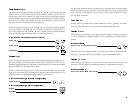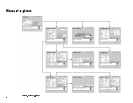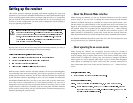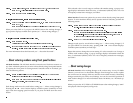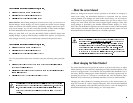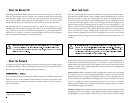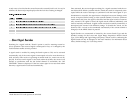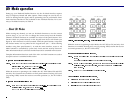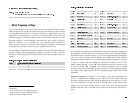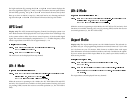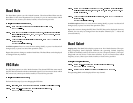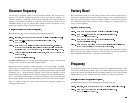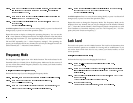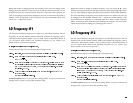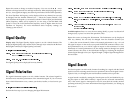
Table 4 provides a summary of available Alt Mode functions.
«$ERXWIUHTXHQF\VHWWLQJV
As you make changes to the current setup, the receiver checks that the Local Os-
cillator frequencies, Crossover frequency, Frequency and Frequency Mode settings
are compatible with each other. A Crossover frequency is required only if you are
using both Local Oscillators (i.e., you have a dual-band LNB). If used, the Local
Oscillator Frequency #2 must be greater than Local Oscillator Frequency #1. The
operating Frequency, Local Oscillator frequencies plus the Crossover frequency
must be correctly set as specified by your antenna/LNB manufacturer,
dealer/reseller or local service provider. The Frequency setting plus other settings
used depend on subscriber/network services available, and may vary.
The relationships between the Downlink frequency, the Local Oscillator frequency
and the resulting L-Band (operating) Frequency are shown in Table 3 for both
C-Band (3.7 GHz through 4.2 GHz) and Ku-Band (10.7 GHz through 15 GHz) op-
eration.
1
Frequency
2
Press ALT once for Alt-1 Mode operation
3
Press ALT twice for Alt-2 Mode operation
4
Enables or disables Signal Search
The examples that follow are provided to help explain how frequency settings can
be changed by switching from lower to higher resolution at the front panel display.
The (default) lower resolution display (i.e., four most significant digits) changes the
value up or down in larger steps for making coarse adjustments. When selected,
the higher resolution display (i.e., four least significant digits) changes the value up
or down in smaller steps for making fine adjustments. When in Alt-1 or Alt-2
Mode, pressing the up or down arrow button advances the frequency up or
down. You use the left or right arrow button to change from low to high
resolution. Note that when displaying high resolution (i.e., least significant digits),
the decimal point appearing after the least significant digit flashes ON and OFF
repeatedly.
Downlink frequency: (see Figure 7) For example; if the current Downlink fre-
quency is 12.25225 GHz, changing to Alt-1 Mode (ALT LED flashes) and then
pressing 7 displays the four most significant digits on the front panel (i.e., 12.25).
At low resolution (A), pressing the up or down arrow button advances the
frequency up or down in 10 MHz steps (i.e., 12.26, 12.27, and so on). Pressing and
holding down the up or down arrow button will increase the step size fur-
ther.



